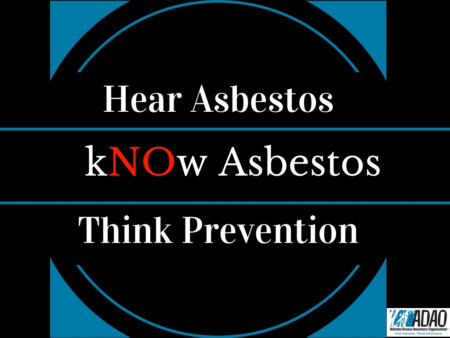Posted on January 30, 2021
 Each year, nearly 40,000 Americans lose their lives to preventable asbestos-caused diseases such as mesothelioma, asbestosis, cancers of the lung, larynx and ovaries, and more.
Each year, nearly 40,000 Americans lose their lives to preventable asbestos-caused diseases such as mesothelioma, asbestosis, cancers of the lung, larynx and ovaries, and more.
Most Americans likely do not know that asbestos is still legal and lethal in the United States today. Hundreds of tons are imported and used each year, and legacy asbestos can be found in our air, water, and soil, as well as in millions of buildings around the nation. Legacy asbestos is the asbestos currently present in said places. Here are the five things you need to know and do to prevent asbestos exposure and disease. If you’d like to learn more, you can go to kNOwAsbestos, a one-stop resource guide for you to learn about asbestos and what to do about it.
What is asbestos?
Asbestos is a naturally occurring fiber found in certain types of rocks. The fibers are so small that they are not able to be seen with the naked eye. Asbestos was frequently used in construction because of its fire-resistant characteristics, but we have known for decades that it causes deadly illnesses. When breathed in, those tiny fibers embed themselves in the lungs, causing fatal diseases such as mesothelioma and multiple types of cancer.
The Environmental Protection Agency (EPA) tried to ban asbestos in 1989, but the ban was overturned two years later due to a challenge in court by the asbestos industry. Since then, one million people have died from asbestos-caused illnesses.
Where is it?
Unfortunately since asbestos was so widely used in the past, it can still be found in millions of structures around the U.S. Meanwhile, the manufacture, importation, processing and distribution in commerce of certain products, such as brake pads, vermiculite attic insulation, and vinyl floor tile, is also not yet banned. You can see a list of common products that contain asbestos here.
What do I do if I suspect there is asbestos?
Do not touch it! EPA states that “you can’t tell whether a material contains asbestos simply by looking at it, unless it is labeled. If in doubt, treat the material as if it contains asbestos and leave it alone. A trained and accredited asbestos professional should take samples for analysis, since a professional knows what to look for.”
How do you prevent exposure? “Hear Asbestos. Think Prevention”
- Always remember that asbestos is a known carcinogen that has not been banned in the US.
- Understand where asbestos might be in your home, school, and workplace.
- Review the EPA’s “Asbestos Dos and Don’ts” for the Homeowner
- Never test, remove or even sweep up asbestos yourself! Contact your EPA regional office for a list of licensed asbestos professionals in your area.
- Watch and share ADAO Prevention Board Co-Chair Brent Kynoch’s informative presentation “Preventing Asbestos Exposure in Your Home, Workplace and Beyond,” included at the bottom of this blog.
- Talk with your physician! Be sure to share your medical and occupational history, as that provides them with an understanding of potential exposure.
- If you smoke – quit. Smoking increases the chance of developing mesothelioma at a higher rate.
What are early warning symptoms of an asbestos-caused disease?
According to the National Cancer Institute (NIH) you should contact your doctor immediately if you experience any of the following symptoms:
- A persistent cough that gets worse over time
- Blood in the sputum (fluid) coughed up from the lungs
- Pain or tightening in the chest
- Difficulty swallowing
- Swelling of the neck or face
- Loss of appetite
- Weight loss
- Fatigue or anemia
- Shortness of breath, wheezing, or hoarseness
The above symptom list is from the National Cancer Institute Fact Sheet “Asbestos Exposure and Cancer Risk.” Although not all asbestos exposure or disease leads to cancer, it is vital to remain wary of the risks and symptoms so as to seek treatment as early as possible.
We encourage you to take action and keep yourself safe from asbestos and the diseases it causes.
Linda Reinstein
Social Networks
